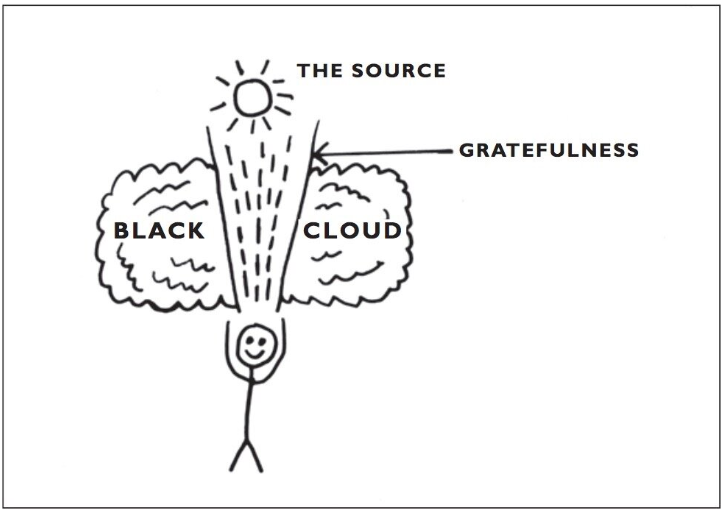Learn how to quickly flip your perspective and create positive change.

I guess you could say I had this coming to me. In last week’s newsletter I shared ten tactics and routines that allow me to run my business, stay in shape and be present for my family.
Little did I know that I would have to use many of those tools almost immediately due to an unfortunate incident at work.
I’ll share that story with you now for two reasons.
- Some high-performance tools and tactics sound great when you hear about them, but they don’t actually work in the real-world.
- Some “experts” sound great when talking about high-performance tools and tactics, but they don’t actually use them in the real world.
So, in the interest of keeping it real and showing proof of concept, I’ll share what happened this week.
Keep in mind that I’ll need to be vague with some of the initial details for confidentiality purposes.
The Situation
For the last two months I’ve been working on a project that involved one of my business partners and a mutual client. After completing the project I discovered the client wasn’t happy with a few aspects of the delivery.
My business partner and I were able to resolve all the issues but one. And, unfortunately, that issue was directly related to a Federal Communications Commission (FCC) regulation.
By law, we couldn’t do anything to resolve that aspect of the delivery so the client got upset. And by “upset” I mean a flurry of emails that escalated from stern to scathing real quick.
I decided it wasn’t worth the hassle and the best course of action was to offer a full refund, even though we already delivered the project.
At this point you could probably understand why I’d be annoyed at the situation. Initially, I was, but then I saw it as an opportunity to actually use the high-performance tools I’ve shared in the real world.
These are the tools that helped me go from annoyed to grateful in a matter of minutes.
Tool #1: Thought monitoring
The situation with the (now) ex-client left me annoyed. I spent hours, resources and money to complete the project. And since we gave them a full refund, I ended up losing money as opposed to making any.
I was thinking about this over and over as I was making dinner in preparation for my kids to come home from school. I was stuck in a maze of negative thoughts.
But then I used a quick but powerful tool to snap out of it, thought monitoring. It’s pretty much what it sounds like, you pay attention to what you’re thinking about and then ask yourself a simple question.
“Is this thought useful or necessary?”
Since my kids were about to come home, being annoyed about something that was related to work – and was already resolved – wasn’t useful or necessary.
Just like that my thoughts shifted away from the frustration and instead, I focused on making dinner. This focus put me in an almost meditative state and gave me a sense of calm.
Your life is shaped by your thoughts. So if you want to have a better life, think about better stuff.
Tool #2: Defend your enemy
Maybe “enemy” is a strong word for that ex-client, but it’s safe to say we were temporarily at odds.
Either way, defending people who you feel have wronged you is a great way to shift your perspective and perhaps discover the underlying reasons behind their actions.
So here’s how the tool works. Instead of being upset about what they’ve done, play the role of their public defender. Imagine that person is on trial for their actions, and you have to explain their side of the story to a jury.
In this case I knew the client was very close to his family and they held him in high regard. I imagine he told them about this project and was looking forward to sharing it with them upon completion.
So when that FCC regulation came up – which altered the final delivery of the project – he was crushed. Sure, it was mentioned in the contract, but the guy isn’t a lawyer and I can’t expect him to understand everything involved.
Does this make up for him popping off and sending a bunch of rude emails? No. But it did help me understand why he reacted the way he did. He was upset and I was experiencing his initial reaction.
Instead of hating him, this exercise caused me to empathize with him. Taking it a step further, I’m hoping he quickly got over the setback so he can keep showing up as a positive influence in his family.
Tool #3: The Grateful Flow
Do you keep a gratitude journal? There are several benefits to being grateful.
- Reduce depression
- Less anxiety & stress
- Improve sleep
I also find it helps me be less easily annoyed and more quickly get over setbacks. So, I decided to use a tool called The Grateful Flow to flush out any remaining negativity before my kids got home.
I picked up this approach in a book called The Tools.
Here’s how it works.
1. List What You’re Grateful For
Silently say to yourself five things in your life you’re grateful for, particularly items you’d normally take for granted. Go slowly and feel gratitude for each item.
Then rapidly come up with more things to be grateful for, it doesn’t have to be a complete thought. Just keep searching your brain for more examples.
Do this for about 10 seconds but just as you’re about to think of one more thing to be grateful for, stop and hold it in.
2. Feel the Sensation of Gratefulness
Now, stop thinking and focus on the physical sensation of gratefulness. As per the book, you’ll feel it coming directly from your heart and this energy you feel is the Grateful Flow.

I know this may sound a bit woo-woo for you, but give it a try. These positive thoughts allow you to break through any black cloud that may be lingering over your head.
And if you’re curious, here are a few things I’m grateful for.
- My family
- Electricity
- My gym membership
- High speed internet
- My network
- My business partners
Ready to make your list? Go for it. This will only take about 10 seconds but it can make a huge impact.
The Outcome
Yes, I listed my business partners as something for me to be grateful for.
And that may sound weird but it’s important to me because I built my business on relationships, not fancy sales or marketing campaigns.
So, knowing that I brought in a client who caused a great deal of stress for my business partner, I wanted to make up for it. To do so, I sent her a gift card for a spa from Thnks, a portal that allows you to quickly and easily send gifts of appreciation.
She was very happy about it and expressed her gratitude via email. But then I took it a step further, I followed up with a video of me explaining how I was able to go from annoyed to grateful by using the three tools I just shared with you above.
I got another reply, but she was even more grateful this time around. She let me know there was a much larger client who had been giving her issues the past few months, and this latest incident with the client I brought on just made the whole situation feel worse.
Fortunately, she also said the tools I sent over were just what she needed to handle both clients better and not let them get her down. She’s a parent too so I know being able to more fully show up for her children is extremely important.
I almost didn’t make that video – I kinda felt silly sending it – but I’m so glad I did.
For me, this is further proof that I can help people get through tough times by sharing the same tools I’ve used to push through my own challenges. As a result, they’ll be kinder and more helpful to those around them, and the ripple effect will continue throughout their community and network.
Next steps
Ready to discover more tips and tools to help you overcome setbacks, seize opportunities and perform at your highest level? Learn more about my keynotes and sign up for my free video course, The High-Performance Playbook.
Designed explicitly for entrepreneurs and high-performing professionals like you, this course gives you the tactics and routines needed to achieve relentless growth, peak efficiency, and sustainable fulfillment. You can enroll for free and start your journey today.
This article was written by Terry Rice, and originally appeared on Entrepreneur.com.




